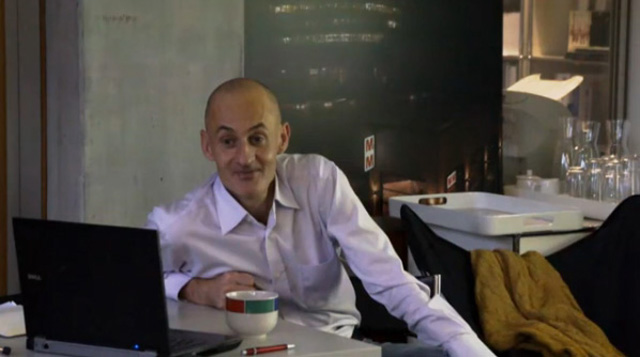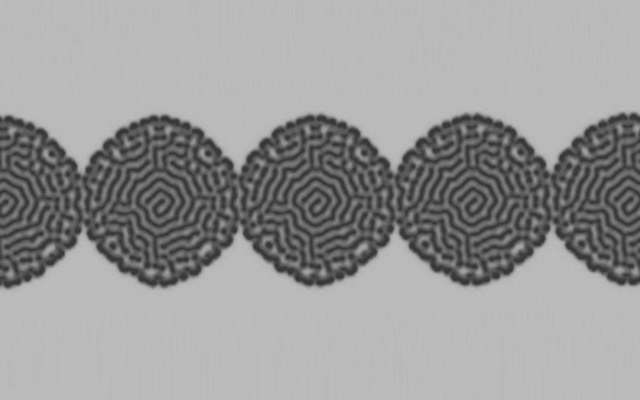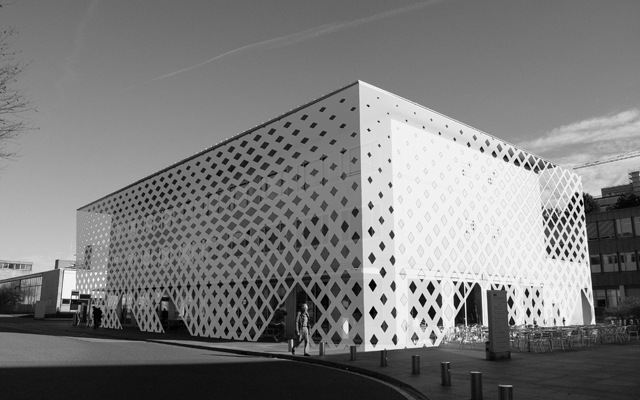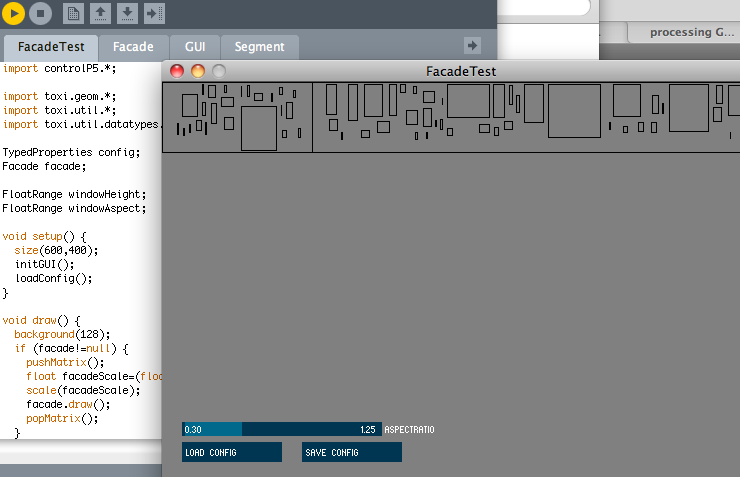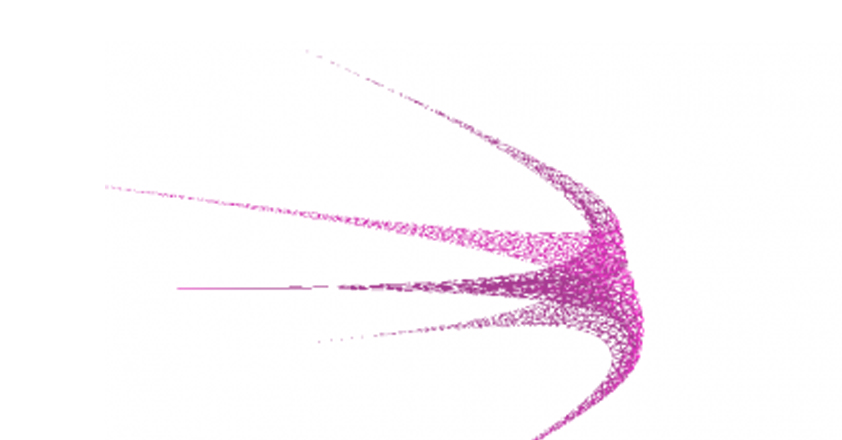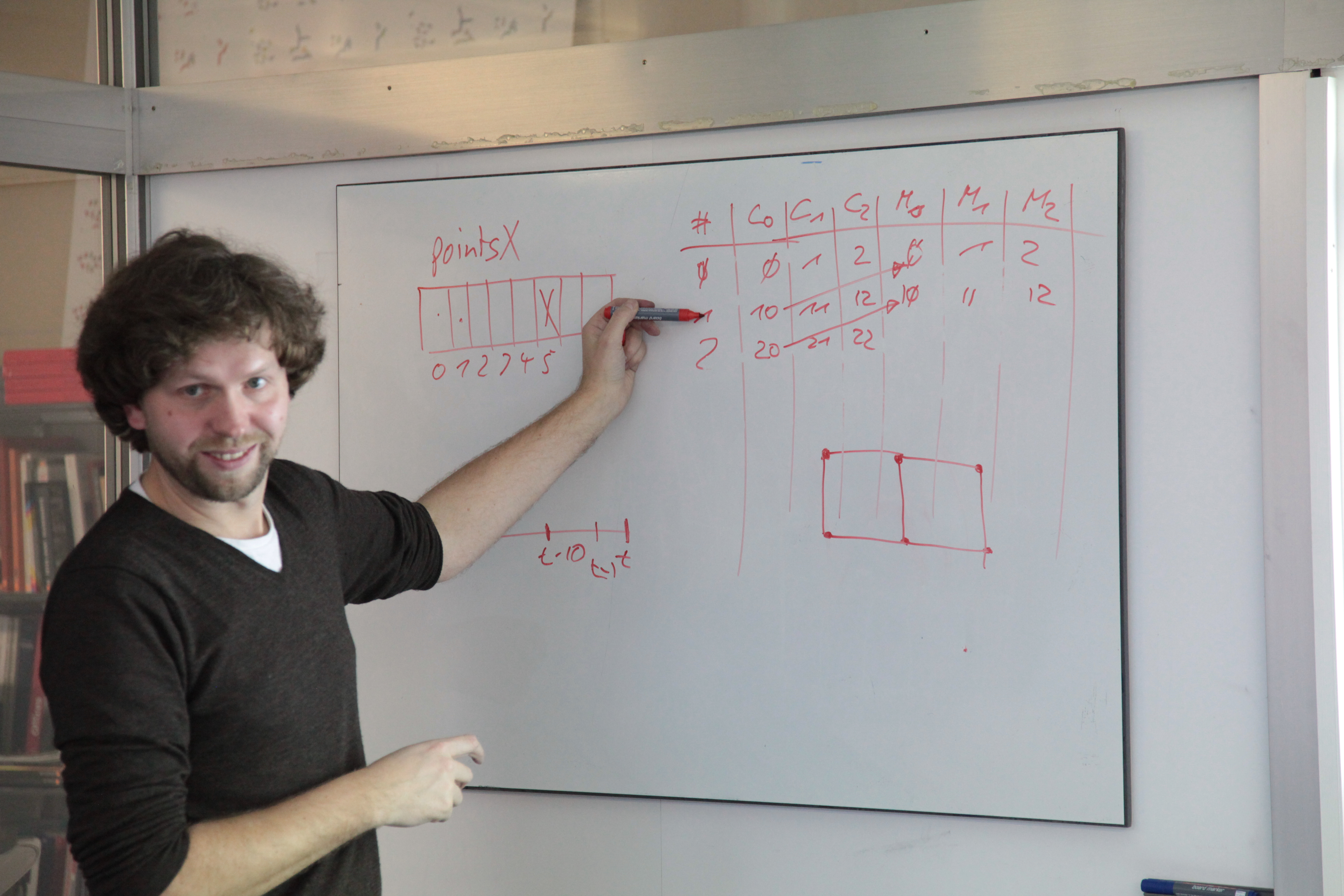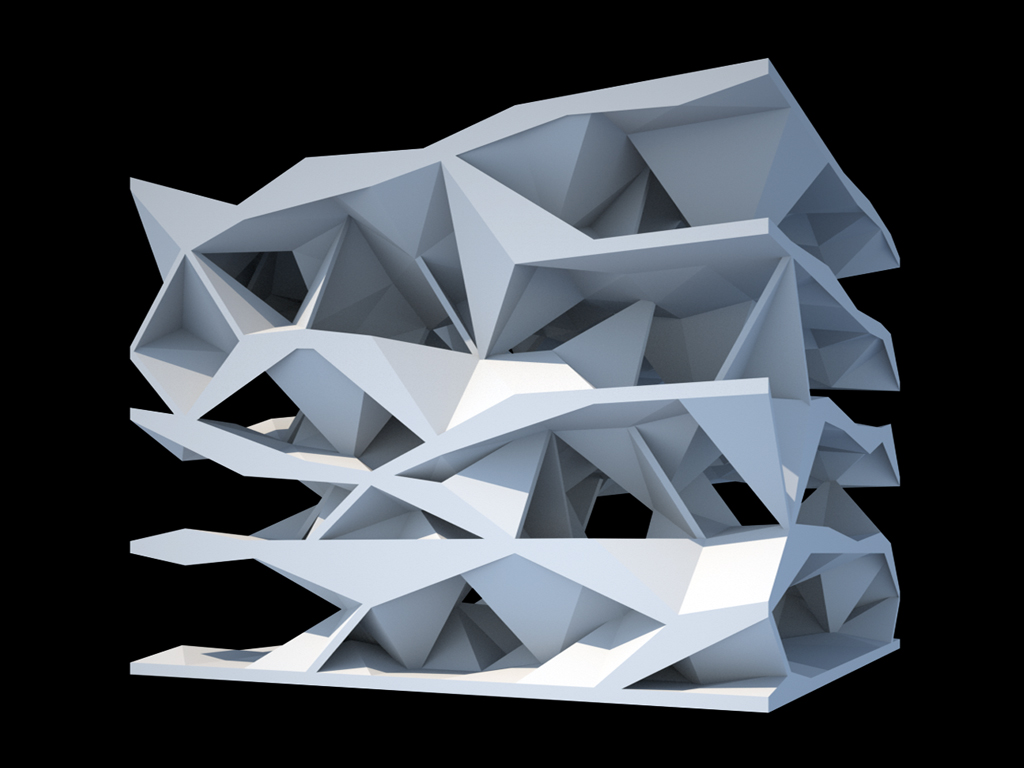M2: Any Form
M Two: Any Form, Intro to┬ĀProcessing
M2 Module two is an exploration of procedurally generated forms, free of any architectural constraints. Hammer and chisel are abstracted and replaced by formulas and algorithms. Material is initially reduced to vertices, edges, and faces, before being reconstituted though a digital fabrication process.No longer is a single object the focus of our attention. Instead we are concerned... Read More
Posts by date
M2:25.11.2010/ Klaus Wassermann /Complexity and its Neighbourhood
This lecture contextualizes reaction-diffusion systems (RD) in a wider framework of complexity. It is shown how the concept of complexity can be founded as a precisely defined and quantifiable framework, which additionally overcomes the┬Ā usual reductionist definitions. Instead, an Aristotelian position is taken by proposing five necessary and sufficient conditions (“elements”)... Read More
M2:W2(Nervous System): Final Assignment
We had to design three 3d-printable cups using reaction diffusion.The three designs had to be┬Āsubstantially different from each other.The maximum dimensions of each cup were┬Ā6x6x8cm. The minimum wall thickness is┬Ā1.6mm┬Ā. Possible ways to make a 3d-printable cup :┬Ātime extrusion sketch,3d reaction-diffusion sketch,┬Āmesh based reaction diffusion.To generate a cup shape with... Read More
M2: W2 Student Works 1&2 / NERVOUS SYSTEM
We should explore the sample reaction-diffusion simulations and modify them to create a video and images that explore how the patterns change when you vary parts of the process through space and time.We used┬Ā2-d Arrays to vary the Diffusion Rate, Parameters (ex. f and K in Gray-Scott), or Diffusion Direction (anisotropic example) and tried out different initial conditions and reactions(ex.... Read More
M2:W2(Nervous System):Reaction-Diffusion
10:00-12:00 | Intro to ┬ĀReaction-Diffusion:differentation How can an identical set of genetic instructions produce different types of cells? morphogenesis how can cells form ordered structures? growth how do our cells know when to stop dividing and when to die? 13:00-15:00 | Explore Reaction-Diffusion as a form making system. What is the space of forms that it can create? what... Read More
M2:W1(Karsten Schmidt):Skype Meeting on Parametric Facade
The whole weekŌĆÖs work was to be completed with a┬Āparametric facade┬Ādesign for HPI biulding at ETH campus. The facade were to include both:the buildingŌĆÖs surrounding and interior space functions. Students were divided into three working groups.┬ĀClass┬Āand the concept of OOP┬Āwere introduced. That gave an opportunity to design facade elements as instances of a single class... Read More
M2:W1(Karsten Schimdt) Day3: Various
[slideshow] 09:00 – 12:00 |┬ĀMesh to Voxel(Catenary Mesh from Day2 was voxelized and 3D printed), Cellular Automata & Wolfram, Creating Shapes controlling Brownian Motion (i.g.┬Āhttp://www.flickr.com/photos/toxi/345074445/) 13:00 – 19:00 ┬Ā|┬ĀProgramming Parametric Facade, File Read/Write, GUI Library and Others http://learn.postspectacular.com/hg/ETHZDay3 (download... Read More
M2:W1(Karsten Schmidt) Day2: around┬ĀOOP
[slideshow] 09:00 – ┬Ā12:00 ┬Ā|┬ĀLecture on ImageArray, Loading Fonts, Class and Objects (example with ‘Human’ Class) 13:40 – 18:00 ┬Ā|┬ĀUsing and Looking at Libraries,┬ĀParticle based modelling processes, Catenary Mesh http://learn.postspectacular.com/hg/ETHZDay2/ (download ‘zip’) http://media.postspectacular.com/2010/toxiclibs/toxiclibs-complete-0020.zip... Read More
M2:W1(Karsten Schmidt) Day1: Processing Recap + Intro to┬Ā3D
10:00 – 12:30 | Processing Basics Recap & Intro to 3D: checking the origin of some basic concepts, drawing a circle and manipulating various shapes out of it, playing with coordinate system(translate(); pushmatrix(); popmatrix();). 14:00 – 16:00 | An exercise on making 3D Shapes: some highschool math(pytagorian theorem etc.), drawing shpaes with vertex, memorizing... Read More
M2: 09.11.2010/Benjamin Dillenburger
Computational Architecture ŌĆō Topographies & Topologies Can architecture be computed? The potential of computational architecture goes far beyond curved surfaces and free-form geometries. Rather, it is an entirely novel method of design. This method can not only generate previously inconceivable forms, but can also enable designs that incorporate complex sets of relationships... Read More
M2:Student works/Review of 3rd Assignment-Game
On the third day we stepped into the world of games. The task was to analyze a game (code) found on web┬Āand to create either a modification of it or a completely new game. Logicals, Events, simple Dynamics and two basic ways of introducing input data to games: Keyboard Event and Mouse Event were introduced. ┬ĀEnjoy! STUDENT WORKS Agata Muszynska Hideaki Takenaga Jesper Th├Ėger... Read More

